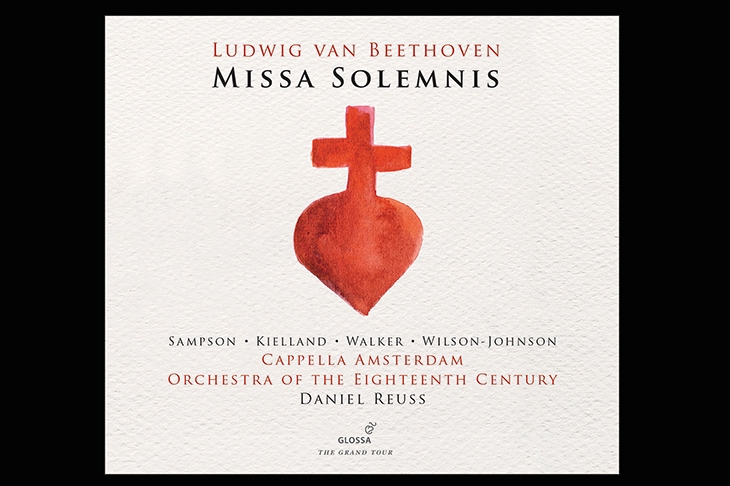When you first encounter it, Beethoven’s Missa solemnis can sound like the Ninth Symphony with more singing but no tunes. But the more I listen to it, the more I agree with the composer that it’s his greatest work — or, at least, up there with the last two piano sonatas and his String Quartet Op. 131, my other nominees. Despite its titanic scale, the Missa solemnis inhabits their intimate sound world: it is built from the harmonically ambiguous motifs of Beethoven’s ‘third style’. Nothing in it is as catchy as the ‘Ode to Joy’. On the other hand, nothing in the Ninth reaches the spiritual stratosphere of the Benedictus, in which the quartet of soloists takes up a frail, searching melody introduced by a solo violin speaking the language of the late quartets.
In both the Mass and the Ninth, Beethoven makes hideous demands of the vocal soloists. In the symphony, it doesn’t matter if you can hear the strain in their voices. In the Missa solemnis, operatic wobbles disturb the Palestrina-like polyphony at the heart of this work.
Few performances successfully blend the quartet of singers, but this one does. The soprano Carolyn Sampson sings with a rare mixture of power and purity; likewise the Cappella Amsterdam. Daniel Reuss gently extracts details from the Orchestra of the Eighteenth Century that I’ve never heard before; his bouncing rhythms rely on pinpoint accuracy that puts other period-instrument ensembles to shame.
I didn’t pay very much, shall we say, to download this recording. Now I’m going to award it my highest accolade and actually buy the CD.









Comments
Join the debate for just £1 a month
Be part of the conversation with other Spectator readers by getting your first three months for £3.
UNLOCK ACCESS Just £1 a monthAlready a subscriber? Log in